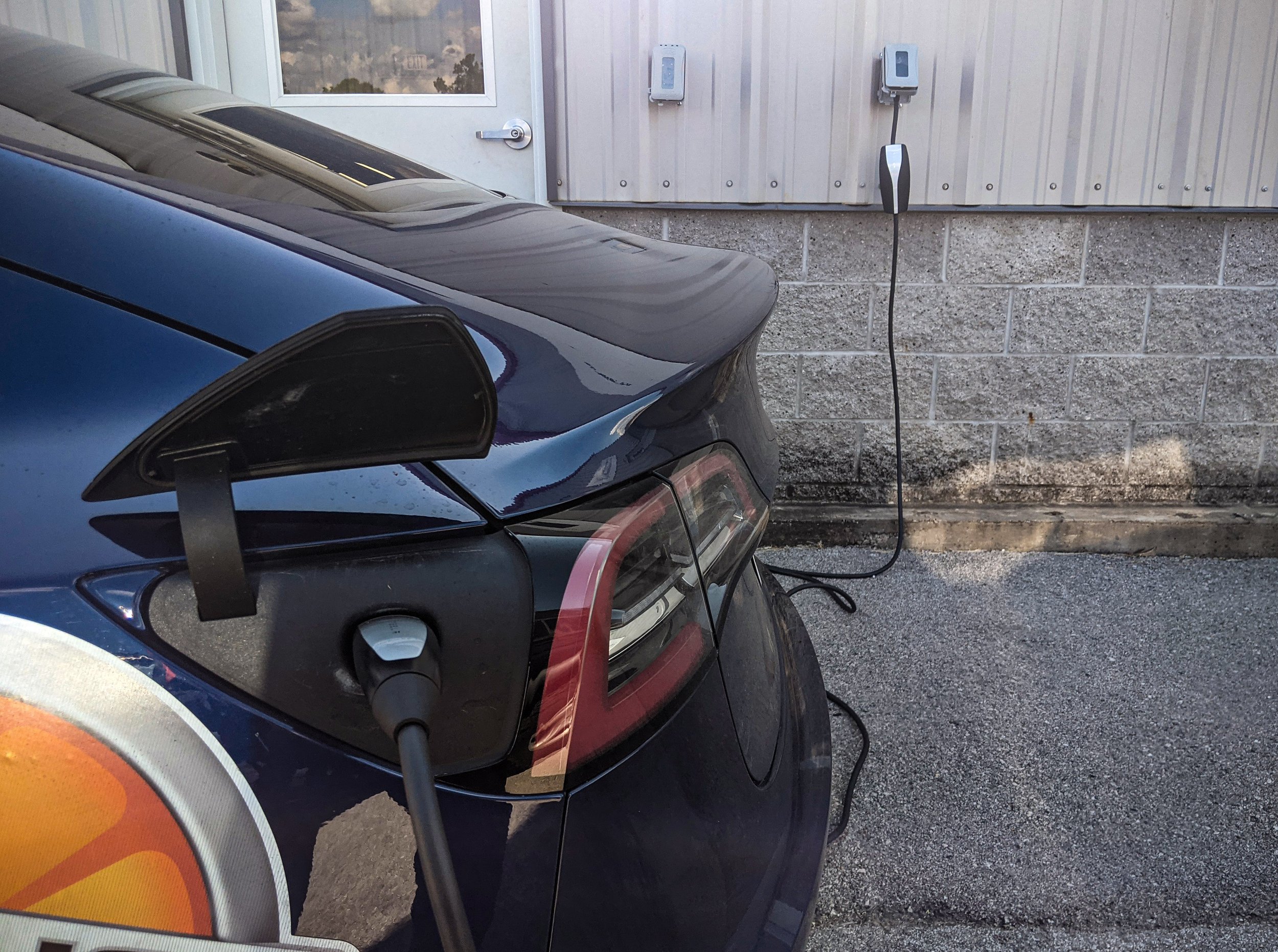EVs and Racetracks: Does It Work?
By Phil Royle — May 14, 2022
People driving their EVs on road course racetrack has become commonplace. That is to say, Teslas are becoming commonplace at the racetrack. Other EVs – not so much. Still, as we roll into an all-EV future, track-going Porsche owners will undoubtedly swap their Caymans and 911s for Taycans and the upcoming electric Boxster, and the numbers of EVs attending track days will increase. But do EVs running at track days work?
During a recent visit to the SCCA Time Trials Nationals at NCM Motorsports Park, I chatted with Matthew, who was competing in the three-day event with his 2018 Tesla Model 3 Performance. The weekend’s competition involved three 20-minute track sessions on Friday, a full day of what is essentially eight high-speed autocross runs on Saturday, and then two more 20-minute track sessions on Sunday.
Not having an EV-specific class in this particular competition, Matthew was competing against Ford Mustangs, Toyota Supras, and Chevrolet Corvettes, and as such, he wanted to maximize his Model 3’s power potential. For that, he needed to maintain a state of charge above 90%. At a racetrack with only a handful of accessible 240v, 50 amp plugs and no on-site Level 3 charger, that was proving difficult.
NCM Motorsports Park allowed this Tesla owner to charger for free using the facility’s 240v, 50 amp plug. The charge received between on-track sessions, however, was negligeable compared to what was needed to maximize on-track performance.
At most racetracks, this is a tricky proposition for EV owners. EV charging infrastructure at the racetrack isn’t a reality right now, and with the exception of some racetracks adding Superchargers and other Level 3 chargers, it’s going to stay that way for a while.
For Tesla owners, Superchargers are ubiquitous enough that a short jaunt from the track between sessions can recoup enough of a charge to keep the EV operational throughout the weekend, but staying in the peak state-of-charge range to maximize performance is a challenge.
Matthew had several options. Nine miles from NCM Motorsports Park is a Supercharger station that he said will charge his Model 3 at about 250kW. A mile from the track at the National Corvette Museum sits a handful of Electrify America chargers, housing four 350kW chargers, three 150kW chargers, and a solitary CHAdeMO charger, which Matthew said will charge his Model 3 at around 35kW via his hefty Tesla-to-CHAdeMO adapter.
The options, however, come with downsides. The CHAdeMO solution could barely add enough power to get the Model 3 back to the most desirable state of charge in time for Matthew’s next track session (one session he made with 10 minutes to spare). Meanwhile, the Supercharger was far enough away that by the time he’d made the drive back to the track, he’d already eaten into the car’s most usable state of charge for maximum power output.
The aforementioned 240v, 50 amp plugs that the racetrack let him use for free were great for topping off between sessions – which he did, with the Tesla charging at about 30 amps – but that method was more useful for overnight charging, which is fantastic for the day’s first track session if you’ve got the ability to leave your EV at the track overnight.
Maximizing the Tesla’s power potential for every track session was proving mildly problematic for the Tesla owner at this track event.
The upside is that he wasn’t fighting anyone for the 240v plugs at the track, and the solitary CHAdeMO charger at the National Corvette Museum was never in use (although one time it was nearly blocked by a delivery truck). But imagine if there had been two, three, or 10 other Teslas at the track.
Many racetracks will build out their EV-charging infrastructure to accommodate the growing influx of EV enthusiasts, but just as many won’t have the budget – or won’t care. Will those racetracks die off? EV lover or not, no enthusiast wants fewer racetracks.
Another possibility in the future is there will be an unwritten EV “capacity” for racetracks, so those with EVs looking to go to a track day may see that an event already has 10 EVs entered, so they won’t attend because they know charging will be a hassle.
For larger, professional track events, there are other solutions, like trucking in large diesel generators or batteries with connected Level 3 chargers, but for the average enthusiast looking for a weekend getaway at the track, those kind of events are few and far between. The real solution for everyday EV track enthusiasts comes with racetracks building out on-site EV charging infrastructure. Currently, that remains a bit of a black hole.
Back to my question: Do EVs running in track days work? In my conversation with Matthew, we concluded that right now – technically – the answer is yes. The caveat is that it only works for a handful of EVs at a time. Will this change, allowing for 20-, 30-, or 40-EV run groups where everyone can charge between track sessions? It’ll be a logistical challenge and a longtime in the making, but I’m optimistic.
(Image by Phil Royle)
- Store - Podcast - Facebook - Google News - Twitter -










